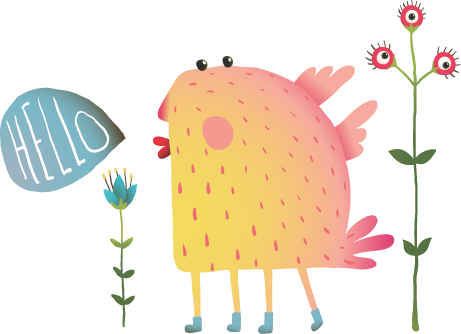
1. Going conversational
For the first time, people are using messenger apps more than social networks. Businesses will go conversational to reach customers in the way they want to connect. We’ve known about conversational interfaces for some time now; virtual assistants in different digital environments that help us plan trips, answer questions and order rides, but we’re going to see a lot more variation in these conversational interfaces.
In 2016, WeChat, one of the largest standalone messaging apps surpassed half a billion users, and chatbot fever hit Silicon Valley. In fact, chatbots was voted “UX Word of the Year” and companies like KLM, Pana and Operator kicked off with chatbot integration. Other companies will soon follow.
Going conversational provides a more intuitive, accessible and efficient interface than traditional graphical user interfaces (GUIs), and that’s where we can make a difference.

2. Beyond the screen
Other than a variety of tooling and frontend frameworks, GUIs have focused solely on improving what’s already familiar. But we don’t live in a 2D world, so why don’t we use the extra dimension? Off-screen offers an exciting new dimension, literally and figuratively. An increasing demand for augmented and virtual reality, crowd-funded hardware, and IoT devices will require different design paradigms, something the UX community hasn’t figured out yet, but will.
Graphical conversational design will eventually merge with speech recognition mechanisms and provide audio feedback instead of a graphical interface (Siri tries to do both). Beyond the screen, interfaces will also open the door for professionals from other disciplines, and we’ll see more psychologists, physiologists, anthropologists and researchers entering the UX field.
“Two things should serve people first, food and software; business should come second.” In striving to create quality products people love, UX will create profit as a byproduct of that quality and thrive in the urgent future. -Alan Cooper a UX legend and pioneer

3. Don’t make me think
As intelligence shifts from the user to the interface, the “Don’t make me think” theory will gain more relevance. Design that responds to unexpressed needs will surpass that which simply delivers upon user interaction. Data science will lead the way, with interfaces that give users a more task-focused workflow with less distraction. Personalised content based on gathered content will replace traditional marketing campaigns.
UX design that uses deep learning mechanisms and artificial intelligence will create more interesting algorithms and lead to more predictive power. More predictive power means more intelligence, which means less to think about.

4. Keep it moving
Motion design will start to make more impact on how users experience the interface, thanks to something called interstitial anxiety. Inter..what? Yes, it’s a mouthful. Interstitial anxiety describes the temporary state of tension users experience between the moments in interface interaction. It consists of two core components; primordial and temporal anxiety, which paradoxically make the user comfortable. For example, page transitions and loading present an opportunity for users to bounce off, so you need to make these transitions attractive. That’s where the art of motion design comes in. It’s been used in video production for years, but more and more, we’ll see these video production experts shifting into UX and more interfaces will accentuate motion design.

5. Goodbye grids
The past two years have produced a slew of fairly similar looking websites that consist primarily of a prominent header, a set of testimonials, large icons with labels and a bunch of text blocks poured into a grid. Grids ensure balance and consistency but are often used only as outlines, rarely as underlying design principles.
In the urgent future, interfaces will be more intelligent, and user flow less linear, so there will be much more room for off-grid, tailor-made design. We will see more visually appealing pages that focus purely on user needs and expectations. Unique, visually appealing images keep users excited.
Personalized content provides more touch points and makes interfaces more non-linear. Also, augmented reality (AR), virtual reality (VR) and artificial intelligence (AI) will find their places.
Now that Agile has reached its full maturity, it’s true potential is shining. Twenty-one years after its inception, a third wave of Scrum is rising. Since its introduction in 1995, cutting-edge companies have been ingraining the Agile and Scrum mindset. Looking forward, business leaders are beginning to re-imagine the ways Scrum can be used to improve rhythm, increase focus and simplify processes. Instead of spinning on hamster wheels, tomorrow’s future-thinking enterprises want to invest in re ection, improvement, and innovation by balancing the scale, and normalizing Agile.





